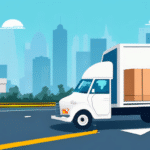Understanding the Ecommerce Fulfillment Definition Process and Resources
As the world increasingly turns to online shopping, ecommerce businesses must implement efficient and effective strategies to fulfill orders seamlessly. Ecommerce fulfillment encompasses the entire process from receiving an order to delivering it to the customer. This article provides a comprehensive overview of ecommerce fulfillment, explores the different types available, and delves into how it operates. Additionally, we will highlight the importance of efficient fulfillment, showcase top resources for ecommerce fulfillment solutions, and offer insights into key factors to consider when selecting a fulfillment partner. We will also address common challenges in ecommerce fulfillment and discuss best practices for streamlining your fulfillment processes. Furthermore, the role of technology in modern ecommerce fulfillment and the advantages of outsourcing fulfillment operations will be examined. Finally, we will explore how effective fulfillment contributes to customer satisfaction and loyalty, and discuss future trends and predictions in the ecommerce fulfillment landscape.
What is Ecommerce Fulfillment: A Comprehensive Overview
Ecommerce fulfillment refers to the end-to-end process involved in receiving, processing, and delivering customer orders placed through an online platform. This process includes order management, inventory control, picking and packing, shipping, and handling returns. Effective ecommerce fulfillment is critical for ensuring customer satisfaction and operational efficiency. According to Statista, global ecommerce sales are projected to reach $6.54 trillion by 2023, highlighting the growing importance of robust fulfillment strategies for businesses.
Ecommerce businesses have the option to manage fulfillment in-house or outsource it to third-party logistics providers (3PLs). Outsourcing to a 3PL offers scalability and access to specialized expertise, which can be particularly beneficial during high-demand periods. Additionally, leveraging technology such as advanced order management systems and automated picking solutions can enhance efficiency and accuracy, reducing errors and improving the overall customer experience.
Different Types of Ecommerce Fulfillment
Ecommerce fulfillment can be categorized into several types, each with its own advantages and considerations:
- Dropshipping: The ecommerce business lists products on their website, but the manufacturer or supplier fulfills the order directly to the customer. This model minimizes upfront inventory costs.
- Third-Party Fulfillment: The ecommerce business outsources fulfillment to a third-party provider that manages the entire process from receiving orders to shipping them out. This allows businesses to scale without significant infrastructure investment.
- Self-Fulfillment: The ecommerce business handles all aspects of fulfillment in-house, including order processing, picking and packing, and shipping. This offers greater control but requires substantial resources.
- Hybrid Fulfillment: Combines third-party and self-fulfillment, allowing businesses to use both in-house and outsourced services based on demand. This provides flexibility and can optimize costs.
Choosing the right fulfillment type depends on factors such as business size, product type, order volume, and available resources. For instance, startups may prefer dropshipping to reduce initial costs, while established businesses might benefit from 3PL services to handle growing order volumes efficiently.
How Ecommerce Fulfillment Works: A Step-by-Step Guide
Understanding the ecommerce fulfillment process is essential for optimizing operations and ensuring customer satisfaction. The typical fulfillment workflow involves the following steps:
- Receiving and Managing Orders: Orders are placed through the ecommerce website or integrated marketplaces. These orders are then processed and managed using an order management system (OMS) to ensure accurate handling and tracking.
- Inventory Management: Real-time tracking of inventory levels ensures that products are available for fulfillment. Effective inventory management includes receiving, storing, and maintaining optimal stock levels to prevent stockouts or overstocking.
- Picking and Packing: Orders are selected from inventory, packed, and prepared for shipment. Utilizing shipping carriers with integrated tracking systems can enhance the accuracy and efficiency of this step.
- Shipping and Delivery: Packed orders are dispatched to customers using various shipping options. Providing multiple shipping choices and real-time tracking information improves customer satisfaction.
- Returns Management: Handling returns and exchanges efficiently is crucial for maintaining customer trust. This involves processing returned items, updating inventory, and managing refunds or replacements.
Implementing automation and advanced technologies can significantly enhance each step of the fulfillment process, reducing errors and speeding up operations. For example, automated picking systems and robotics can streamline order processing, while AI-driven analytics can optimize inventory levels.
The Importance of Efficient Ecommerce Fulfillment
Efficient ecommerce fulfillment is vital for several reasons:
- Customer Satisfaction: Timely and accurate order fulfillment leads to positive customer experiences, which are crucial for repeat business and brand loyalty.
- Operational Efficiency: Streamlined fulfillment processes reduce operational costs and improve profit margins.
- Scalability: Efficient fulfillment systems allow businesses to handle increasing order volumes without compromising quality or speed.
- Competitive Advantage: Superior fulfillment capabilities can differentiate a business in a crowded market, attracting more customers.
For instance, companies like Amazon have set high standards for fulfillment speed and accuracy, compelling other ecommerce businesses to adopt advanced fulfillment strategies to remain competitive.
Top Resources for Ecommerce Fulfillment Solutions
There are numerous resources available to help ecommerce businesses optimize their fulfillment processes:
- Ecommerce Fulfillment Providers: Third-party logistics (3PL) providers specialize in managing fulfillment operations, offering services like warehousing, shipping, and returns management.
- Order Management and Inventory Software: Solutions such as ShipStation, Shopify, and BigCommerce offer comprehensive tools for managing orders and inventory efficiently.
- Pick-and-Pack Software: Tools like Shippo and AfterShip assist in optimizing the picking and packing process, ensuring accuracy and speed.
- Shipping and Tracking Software: Solutions such as FedEx, UPS, and DHL provide reliable shipping options with integrated tracking capabilities.
Leveraging these resources can help ecommerce businesses streamline their fulfillment operations, reduce costs, and enhance the customer experience.
Key Factors to Consider When Choosing an Ecommerce Fulfillment Partner
Selecting the right fulfillment partner is crucial for the success of your ecommerce business. Consider the following factors when making your decision:
- Experience and Expertise: Choose a provider with a proven track record in ecommerce fulfillment and expertise in handling products similar to yours.
- Technology and Automation: Ensure the provider utilizes advanced technologies and automation to enhance efficiency and accuracy in fulfillment processes.
- Scalability: The fulfillment partner should be able to scale their services in line with your business growth and seasonal demands.
- Location: Consider the geographical locations of the fulfillment centers to optimize shipping times and costs for your target markets.
- Cost Structure: Analyze the pricing model to ensure it aligns with your budget and offers transparency in costs.
- Customer Service: Reliable and responsive customer support is essential for addressing any issues that may arise during the fulfillment process.
Evaluating these factors will help you choose a fulfillment partner that aligns with your business needs and supports your growth objectives.
Common Challenges in Ecommerce Fulfillment and How to Overcome Them
Ecommerce fulfillment presents several challenges that businesses must navigate to ensure smooth operations:
- Inventory Management: Maintaining accurate inventory levels to prevent stockouts or overstocking requires robust inventory management systems and regular audits.
- Shipping Costs: High shipping costs can erode profit margins. Negotiating rates with carriers and optimizing packaging can help mitigate these costs.
- Order Accuracy: Mistakes in picking and packing can lead to customer dissatisfaction. Implementing double-check systems and using barcode scanners can enhance accuracy.
- Returns Management: Efficiently handling returns is essential for customer satisfaction. Streamlining the returns process and utilizing specialized software can simplify this challenge.
- Scalability: Rapid growth can strain fulfillment operations. Partnering with scalable 3PL providers and investing in scalable technology can support business expansion.
Addressing these challenges involves strategic planning, investing in the right technologies, and maintaining strong relationships with fulfillment partners.
Best Practices for Streamlining Your Ecommerce Fulfillment Process
- Implement Automation: Utilize automated systems for order processing, inventory management, and shipping to reduce manual errors and increase efficiency.
- Use Data to Make Informed Decisions: Analyze fulfillment data to identify areas for improvement, optimize inventory levels, and forecast demand accurately.
- Standardize Processes: Develop standardized operating procedures for all fulfillment activities to ensure consistency and reliability.
- Train Staff Effectively: Provide comprehensive training to employees on fulfillment processes and the use of technology to enhance performance and accuracy.
- Optimize Packaging: Use appropriate packaging materials to protect products during transit and consider sustainable packaging options to meet consumer preferences.
- Enhance Communication: Maintain clear communication channels with fulfillment partners and customers to ensure transparency and address issues promptly.
Adopting these best practices can lead to more efficient operations, reduced costs, and improved customer satisfaction.
The Role of Technology in Modern-Day Ecommerce Fulfillment
Technology is a cornerstone of modern ecommerce fulfillment, enabling businesses to optimize their operations and enhance the customer experience. Key technological advancements include:
- Order Management Systems (OMS): OMS platforms streamline order processing by integrating sales channels, managing inventory, and automating workflows.
- Warehouse Management Systems (WMS): WMS software provides real-time visibility into inventory levels, optimizes warehouse layout, and enhances picking and packing efficiency.
- Automated Picking Solutions: Robotics and automated picking systems increase the speed and accuracy of order fulfillment.
- Shipping Software: Integrated shipping solutions calculate optimal shipping routes, generate shipping labels, and provide tracking information to customers.
- Data Analytics: Advanced analytics tools help businesses analyze fulfillment data to identify trends, forecast demand, and make informed strategic decisions.
Embracing these technologies not only improves operational efficiency but also provides a competitive edge in the dynamic ecommerce landscape.
Benefits of Outsourcing Your Ecommerce Fulfillment Operations
Outsourcing ecommerce fulfillment to a third-party logistics provider (3PL) offers numerous advantages:
- Reduced Costs: Outsourcing can lower operational costs by eliminating the need for investing in warehousing, technology, and labor.
- Scalability: 3PL providers can easily scale their services to accommodate business growth and seasonal fluctuations in order volume.
- Expertise: 3PLs possess specialized knowledge in logistics and fulfillment, ensuring efficient and accurate order processing.
- Faster Shipping Times: Established 3PLs have optimized shipping networks and negotiated rates, enabling faster and more cost-effective deliveries.
- Focus on Core Business: Outsourcing fulfillment allows businesses to concentrate on core activities such as marketing, product development, and customer service.
- Advanced Technology: 3PLs invest in the latest technologies, providing businesses with access to sophisticated fulfillment tools without the hefty investment.
By leveraging the expertise and resources of a 3PL, ecommerce businesses can enhance their fulfillment operations, reduce costs, and improve overall efficiency.
Cost Analysis: In-House vs Outsourced Ecommerce Fulfillment
Deciding between in-house and outsourced ecommerce fulfillment requires a thorough cost-benefit analysis. Key considerations include:
- Initial Investment: In-house fulfillment requires significant upfront investment in warehousing, technology, and staffing, whereas outsourcing reduces these initial costs.
- Operational Costs: Ongoing costs such as rent, utilities, labor, and maintenance can be higher for in-house operations. Outsourcing typically involves predictable monthly fees based on order volume.
- Scalability: Outsourced fulfillment offers greater flexibility to scale operations up or down based on demand without additional capital expenditure.
- Expertise and Efficiency: 3PLs bring specialized knowledge and efficient processes, potentially reducing errors and improving fulfillment speed compared to in-house operations.
- Control and Customization: In-house fulfillment provides greater control over operations and the ability to customize processes, which may be important for certain businesses.
Businesses must evaluate these factors in relation to their specific needs, growth projections, and financial capabilities to determine the most cost-effective fulfillment strategy.
Customer Satisfaction and Loyalty through Effective Ecommerce Fulfillment
Effective ecommerce fulfillment is directly linked to customer satisfaction and loyalty. Key factors include:
- Timely Delivery: Fast and reliable shipping enhances the customer experience, encouraging repeat purchases.
- Order Accuracy: Accurate order fulfillment reduces the likelihood of returns and increases customer trust.
- Transparent Tracking: Providing real-time tracking information keeps customers informed and reduces anxiety about their orders.
- Efficient Returns: A smooth returns process demonstrates a commitment to customer satisfaction and can improve brand reputation.
- Consistent Quality: Maintaining high standards in packaging and product handling ensures that customers receive their orders in excellent condition.
According to a study by Nielsen, 81% of consumers consider the speed and reliability of delivery as a critical factor in their overall shopping experience. Therefore, optimizing fulfillment processes is essential for fostering customer loyalty and driving business growth.
The Future of Ecommerce Fulfillment: Trends and Predictions
The ecommerce fulfillment landscape is evolving rapidly, driven by technological advancements and changing consumer expectations. Key trends and predictions for the future include:
- Increased Automation: Robotics, AI, and machine learning will play a larger role in fulfillment centers, enhancing efficiency and reducing labor costs.
- Same-Day and One-Day Delivery: As consumer demand for faster delivery grows, businesses will increasingly offer same-day and one-day shipping options.
- Omnichannel Fulfillment: Integrating online and offline channels will become more seamless, allowing for flexible fulfillment options such as buy online, pick up in-store (BOPIS).
- Green Fulfillment: Sustainability will become a priority, with businesses adopting eco-friendly packaging and optimizing delivery routes to reduce carbon footprints.
- Personalization: Customized fulfillment services, such as personalized packaging and tailored delivery schedules, will enhance the customer experience.
- Blockchain Technology: Blockchain can provide enhanced transparency and security in the supply chain, improving traceability and reducing fraud.
- Drone and Autonomous Deliveries: Emerging technologies like drones and autonomous vehicles may revolutionize last-mile delivery, increasing speed and reducing costs.
Staying abreast of these trends will enable ecommerce businesses to adapt their fulfillment strategies, meet evolving customer expectations, and maintain a competitive edge in the market.
Conclusion: Why Understanding the Ecommerce Fulfillment Definition Process and Resources is Crucial for Your Business
Ecommerce fulfillment is a pivotal component of any online business, impacting customer satisfaction, operational efficiency, and overall profitability. By comprehensively understanding the fulfillment process, exploring various fulfillment types, and leveraging the right resources, businesses can optimize their operations and drive growth. Whether managing fulfillment in-house or partnering with a 3PL, implementing best practices and embracing technological advancements are essential for overcoming challenges and staying competitive. Ultimately, effective ecommerce fulfillment fosters customer loyalty and positions businesses for long-term success in the dynamic online marketplace.




















